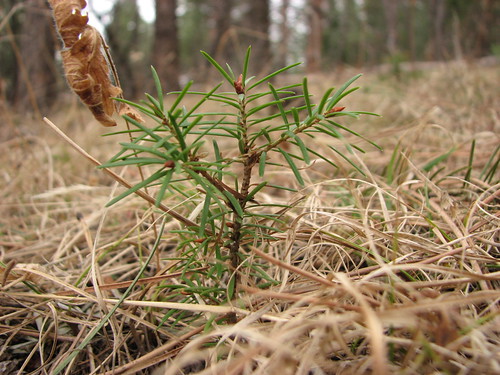On Monday at CSU I attended an all-day
symposium about the
High Park Fire and its aftermath. I was hoping for two outcomes: learn something useful about our burned land, and get a lead on a job. Partial success on one front, and I did at least find someone to send a CV to "just in case something opens up." Baby steps!
Overall I thought it was an excellent program. The Warner College received an NSF RAPID grant to do some post-fire study and work is already well underway. (Hindered, unfortunately, by the lack of pre-fire data points.) I was as always greatly amused by the scientists' reluctance to commit to a definite answer on anything. I know that science deals in confidence intervals and nothing can ever really be
proven to be right, but at a conference like this where homeowners want to know, "What is the best thing to plant for erosion control?", "it depends" or "we're still looking into that" is unsatisfying.

I learned a great deal about hydrology and sedimentation in steep forested areas, a topic I know little about. Evidence from the Hayman fire of ten years ago, and from other fire studies, suggests that most ground cover rebounds within two years except in the most severely burned areas. Seeding may or may not be helpful and is greatly at the mercy of the precipitation that follows seeding. (And today after nearly 24 hours of drizzle, I wish I could go back in time and plant some seed!) Native plants with fibrous root systems are preferable for erosion control, and shrubs are the best. Be cautious of planting for the short-term; perennial grasses may establish so well that they outcompete the shrubs and trees that are supposed to succeed them. Contour log erosion barriers were actually frowned upon by the hydrology guy, who said unless they are perfectly positioned, they can cause even worse eroding rills than the sheeting water they were meant to interrupt.
Only about 47% of the total burn area was moderately to severely burned (per the
BAER report). Restoration and erosion control should be concentrated on the most severe areas; the rest will largely rebound on its own. (I believe we have bits of all four severity categories on our land.) A researcher from the Rocky Mountain Research Station mentioned that it is not known how patch size affects regeneration. What an interesting topic that would be to investigate!

Ground cover regeneration seems like it is not something to fret about. Trees, however, are a different story. Aspens regenerate from below-ground stems and in fact are fire-stimulated, so they'll take care of themselves (our own aspen grove is filled with tiny trees). The conifers however tend to produce huge seed crops (mast) only every 4-6 years, and those result in large numbers of seedlings only if they coincide with a good precipitation season. This alignment is infrequent. The Hayman study showed abundant Ponderosa pine regeneration and poor Douglas-fir regeneration after ten years in less-severe burn areas. In the severely burned areas, tree regeneration was poor all around. This is a discouraging result, although the Hayman was just one site and other burns have shown better regeneration. A later speaker mentioned that places where natural reseeding is unlikely are good candidates for tree planting.
Next step for me: investigate our land and see how the rains are affecting those "severely burned" areas, and let that guide our restoration actions. Also, send a couple of "I enjoyed your talk" emails and meet people in my field! I signed up to volunteer with the
Colorado Natural Heritage Program as well. As the Alma College career center loved to tell us, It's all about networking. Ugh.




